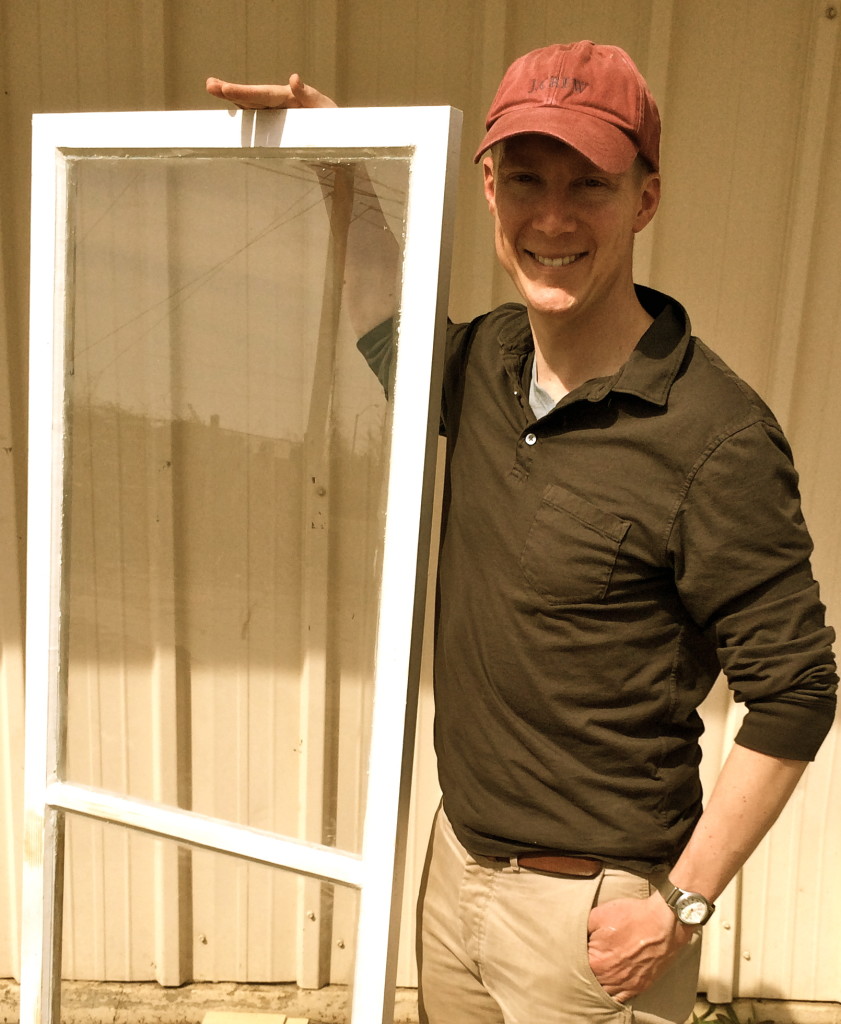
David Schoell, SE
Associate
David received his Bachelor of Architectural Engineering degree from Oklahoma State University and is a licensed Structural Engineer in Oklahoma. David’s project experience includes retail…
View Profile
I’m sure you’ve all heard that the greenest building is the one that’s already built. The sentiment suggests that preserving a structure involves less energy than constructing a new one. By reusing and recycling components, we lessen the emissions involved in the extraction, transportation and manufacturing of new building components. But what about historic windows? Wouldn’t a new window be better than something old, leaky, and drafty? I endeavor to convince you that not only is window restoration the architecturally appropriate thing to do, but, contrary to popular advertising, is also the most environmentally responsible.
All too often people buy houses built in the early 20th century, complete with their original wood windows, but decide to replace them with vinyl or aluminum windows. I feel this is one of the greatest tragedies happening to our historic properties. Not only is it unnecessary, but removing those charming windows degrades the architectural significance of our buildings and homes. Replacing siding may not erode the character of the home, but windows serve as a defining piece of our homes’ exterior. Windows allow us to differentiate between architectural styles, but accurate proportions and profiles are commonly lost, or severely muted, in replacement windows, including those that purport to be historically appropriate.
Even if some of us may want to retain the charm of our city’s historic neighborhoods, we are fighting a battle against the replacement window industry that tells us new is better, that energy is literally escaping right out of our windows. I will concede that a neglected wood window is more wasteful than a standard new replacement window. However, remediation of an existing window can be as, if not more, energy-efficient than the standard replacement window given their lifespan. They want us to change to “energy-efficient” windows, but how “green” is something you have to replace every 15 years?
Consider the double pane technology commonly employed in replacement windows. The components of a double pane glass window are the two sheets of glass, the aluminum around the perimeter of the glass, and the silica beads, which you probably don’t know about, inside the aluminum channel. Glass is a terrible insulator; this is not a surprise. The air gap between double pane windows is an insulating feature, intended to reduce energy transfer (thus, making it “energy-efficient”), but the air gap is only effective if the seal between the panes of glass remains intact. Given the uneven rates of thermal expansion among glass, vinyl and aluminum, severe temperature conditions will compromise the seal and let more energy escape. Contrast this with a conventional wood window, comprised primarily of glass and wood that share similar rates of thermal expansion. Because of this similarity, they are less sensitive to temperature swings, and thus experience less stress over time. Adding a weatherized wood storm window makes this system even more stable. A system that uses a properly weatherstripped, restored wood window combined with a weatherstripped wood storm window experiences less air infiltration than a conventional “energy-efficient” replacement window. The average payback for residential disposable replacement window is about 40 years. Paybacks for comparable, restored and weatherstripped window with storm window run about 3 to 7 years.
Spoiler Alert: The window industry uses silica beads within the perforated aluminum perimeter strip, mentioned above, to conceal the fact that the seal has failed. Moisture gets in because the seal has failed. In a double pane window, the silica beads inside the aluminum perimeter strip absorb moisture from incoming air. If not for the silica beads, any moisture in the space between the panes would condense on the glass once the glass cools below the dew point temperature. Over time, the silica beads will become saturated and no longer prevent condensation from forming. Depending on conditions this could take up to 15 years. Time to buy new windows! $$$
If you are not turned off by the “flat” appearance of many new traditional replacement windows or by the environmental impact of vinyl manufacturing and you choose to ignore that the glass/wood system is simply more viable, what happened to learning how to fix something yourself? We’ve made it too easy to just go out and buy something that is seemingly as disposable the day we bought it. But consider the pride of a renovation or restoration. Rest assured, the process of weatherstripping and restoring a window is well within the common DIY skill set of those willing to extend themselves. Yearly education outreach efforts facilitated by the Tulsa Preservation Commission and associated homeowners groups offer window restoration workshops to both homeowners and contractors. I have participated in these workshops, restored windows on my own house and have built wooden storm windows with immense satisfaction and pride, all at a fraction of the cost associated with a replacement window. Plus, I got to meet PBS House Doctor, Bob Yapp! There’s also a wealth of knowledge from the National Park Service United States Department of the Interior website on window restoration, as well as a hands-on guide produced by the Window Preservation Standards Collaborative, a nonprofit group dedicated to window restoration.
Folks, we can and must evolve. New windows are truly anti-green and anti-energy efficient. From a green/environmental standpoint, throwing away a perfectly good window is environmentally irresponsible. Let’s get glazing!
David Schoell is an associate at Wallace Engineering, a structural and civil engineering consulting firm. He can be contacted at info@wallacesc.com. Please follow us on Twitter (@WallaceEng) for blog updates.

Are you passionate about the AEC industry? Do you want to use your talents with a group of the greatest engineers, landscape architects, technicians and support personnel in the industry? You've found the right place. Wallace is unique in the way we strive to make lives better for our clients, communities and employees. And we believe we have more fun doing our job than just about anyone else! The art of possibility. Discover it at Wallace.
Learn More
Having re-glazed more windows than I can count, I appreciate this article. I did it for the appearance, but it’s great to know the facts behind the construction of modern windows – and to think about it in terms of the environment.